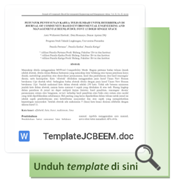COMMUNITY PARTICIPATION IN BAMBOO FOREST MANAGEMENT IN KITAKYUSHU CITY
DOI:
https://doi.org/10.23969/jcbeem.v5i2.3888Keywords:
bamboo forest, invasion, fast growth, utilization, community involvementAbstract
The fast growing bamboo causes problems in Kitakyushu as it is able to invade other plant areas. Bamboo forests that are growing too fast are often left without being properly cared for by landowners. This worsens the condition of the balance of the ecosystem in this bamboo forest area. In this study, an investigation was carried out on efforts to manage bamboo forests in Kitakyushu City, especially those involving the community. Efforts to manage bamboo forests are carried out by the government and the community in Kitakyushu City. The volunteers come from students and the general public. Activities carried out include providing experience for community members to cut bamboo trees, make musical instruments from bamboo and perform performances using these musical instruments. This activity instills awareness in the participants to better maintain the balance of the existence of this bamboo forest. The potential for the use of bamboo is actually very wide open, both as a musical instrument, souvenirs, cooking ingredients, construction materials, activated carbon and others. However, efforts to increase the benefit value of these products still have to be made to compete with other raw materials.
Downloads
References
Kusaba, T., Dewancker, B. Preservation of Bamboo forest by local citizens in Kitakyushu City, Japan. Proceeding of 1st International Conference on Modern Bamboo Structure, ICBS-2007, 2008, pp. 97-102
http://botanyboy.org/moso-japans-giant-bamboo-phyllostachys-edulis/ (accessed 19 March 2021)
Mei, T., Fang, D., Röll, A., Niu, F., Hendrayanto, Hölscher, D. 2015. Water Use Patterns of Four Tropical Bamboo Species Accessed with Sap Flux Measurements. Front Plant Sci, 6: 1202, DOI: 10.3389/fpls.2015.01202
Teixeira da Silva, J.A., Karimi, J., Mohsenzadeh.,S., Dobránszki, J. Allelophatic Potential of Select Gymnospermous Trees. Journal of Forest and Environmental Science, Vol. 31 (2), 2015, pp. 109-118, DOI: 10.7747/JFES.2015.31.2.109
Han, C.L., Liu, T., L., Fujimoto, N. 2017. Source Water Purification of Bamboo Activated Carbon Prepared from Bamboo Charcoal by Using the Multi-layer Filtration Method. Journal Faculty of Agriculture Kyushu University, 62(2): 459-467
Horner, A. Modeling Chinese musical instruments. The Journal of Acoustical Society of America 103, 3043. DOI: 10.1121/1.422612
Francois, D., Liauw, S. Y. 2019. Important Application and the Perceived Benefits of Bamboo: A Comparion between Consumers and Businessmen. International Journal of Business and Management. Vol. 14(6): 12-28
Kaur, P.J. 2018. Bamboo availability and utilization potential as a building material. Forestry Research and Engineering International Journal. Vol 2(5): 240-242.
Chongtham, N., Bisht, M.S., Haorongbam, S. 2011. Nutritional Properties of Bamboo Shoots: Potential and Prospects for Utilization as a Health Food. Comprehensive Reviews in Food Science and Food Safety. Vol 10(3): 153-168
Mahanim, S., Ibrahim, W.A., Jalil, R. 2011. Production of Activated Carbon from Industrial Bamboo Waste. Journal of Tropical Forest Science 23(3): 417-424.














